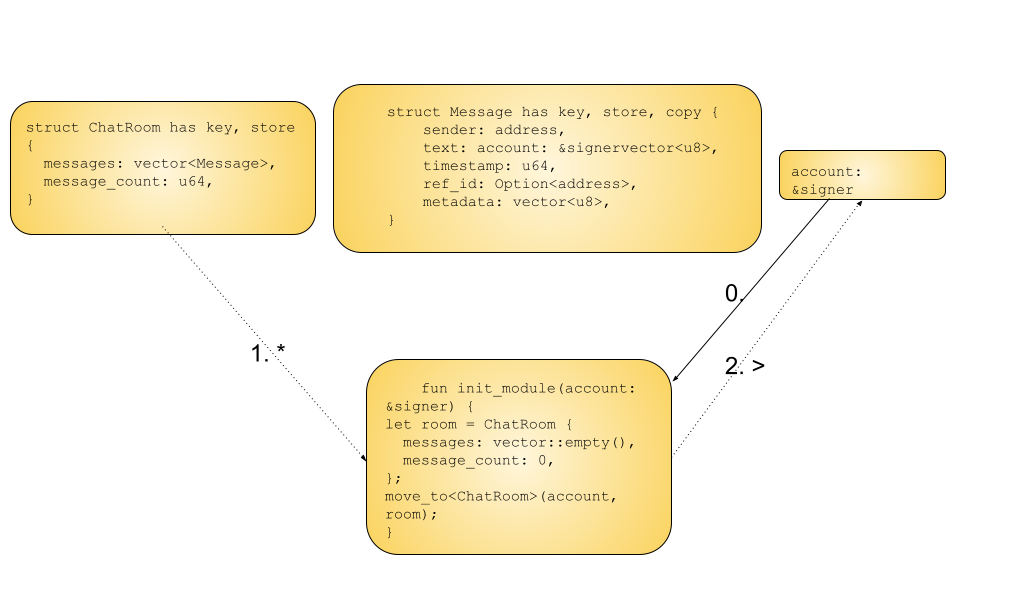Your dApp's architectural diagram
To create a diagram of Move Chat, start by looking at the types and functions specified in the module code:
#![allow(unused)] fn main() { struct ChatRoom has key, store { messages: vector<Message>, message_count: u64, } struct Message has key, store, copy { sender: address, // Post's text. text: vector<u8>, // Post's timestamp. timestamp: u64, // Set if referencing an another object (i.e., due to a Like, Retweet, Reply etc). // We allow referencing any object type, not only Message NFTs. ref_id: Option<address>, // app-specific metadata. We do not enforce a metadata format and delegate this to app layer. metadata: vector<u8>, } fun init_module(account: &signer) { let room = ChatRoom { messages: vector::empty(), message_count: 0, }; move_to<ChatRoom>(account, room); } /// Create a new chat room. public entry fun create_chat_room(account: &signer) { let addr = signer::address_of(account); assert!(!exists<ChatRoom>(addr), E_CHAT_ROOM_EXISTS); let room = ChatRoom { messages: vector::empty(), message_count: 0, }; move_to(account, room); } /// Simple Message object getter. #[view] public fun get_messages(addr: address) : vector<Message> acquires ChatRoom { let room = borrow_global<ChatRoom>(addr); room.messages } }
There are three main types: ChatRoom, Message and a &signer (account).
They can be represented in the following way:

init_module is a function that gets called once, when the module is first deployed.
init_module takes in a reference to a signer then creates a new ChatRoom object and moves it to the signer's account address.
Here's one way to represent that with a diagram:

In the above diagram, an asterisk (*) represents creating a new instance of some type.
The angle bracket (>) represents moving a resource to an account.
- Step 0: The wallet (
account) calls theinit_modulefunction - Step 1:
init_modulecreates a newChatRoomresource - Step 2: The
ChatRoomresource is moved toaccount.